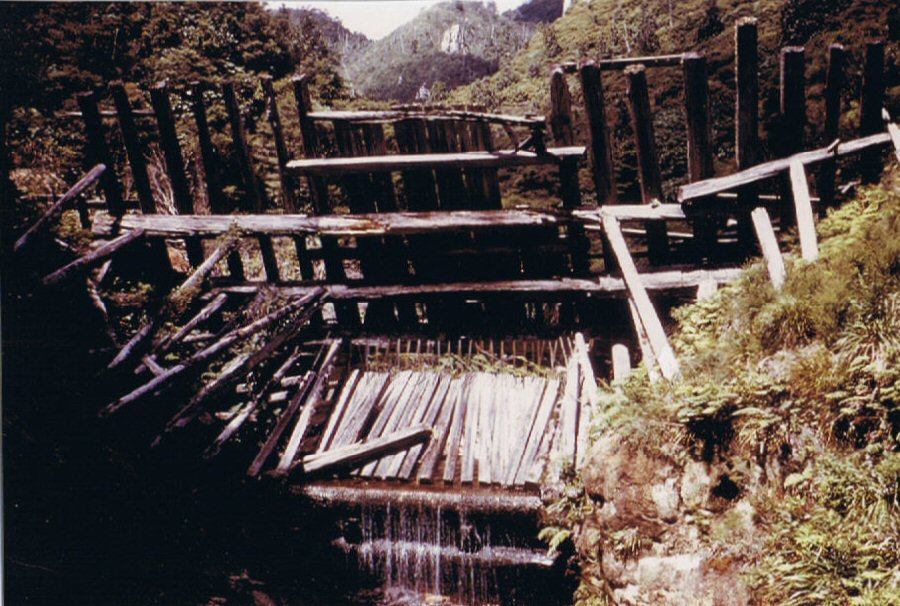|
City Of Auckland
Auckland City was a territorial authority with city status covering the central isthmus of the urban area of Auckland, New Zealand. It was governed by the Auckland City Council from 1989 to 2010, and as a territory within the wider Auckland Region, was also governed by Auckland Regional Council. Auckland City was disestablished as a local authority on 1 November 2010, when Auckland City Council was amalgamated with other councils of the Auckland Region into the new Auckland Council. At the time of its disestablishment, the city had a resident population of around 450,000. The Auckland City included the Auckland CBD – a major financial and commercial centre – the surrounding suburbs, and Hauraki Gulf islands such as Waiheke Island, Waiheke and Great Barrier Island. Geography The mainland part of Auckland City occupied the Auckland isthmus, also known as the Tāmaki isthmus. The Waitematā Harbour, which opens to the Hauraki Gulf, separated North Shore, New Zealand, North ... [...More Info...] [...Related Items...] OR: [Wikipedia] [Google] [Baidu] |
Territorial Authorities Of New Zealand
Territorial authorities are the second tier of local government in New Zealand, below regional councils. There are 67 territorial authorities: 13 city councils, 53 district councils and the Chatham Islands Council. District councils serve a combination of rural and urban communities, while city councils administer the larger urban areas.City councils serve a population of more than 50,000 in a predominantly urban area. Five territorial authorities (Auckland, Nelson, Gisborne, Tasman and Marlborough) also perform the functions of a regional council and thus are unitary authorities. The Chatham Islands Council is a '' sui generis'' territorial authority that is similar to a unitary authority. Territorial authority districts are not subdivisions of regions, and some of them fall within more than one region. Regional council areas are based on water catchment areas, whereas territorial authorities are based on community of interest and road access. Regional councils are respons ... [...More Info...] [...Related Items...] OR: [Wikipedia] [Google] [Baidu] |
Great Barrier Island
Great Barrier Island ( mi, Aotea) lies in the outer Hauraki Gulf, New Zealand, north-east of central Auckland. With an area of it is the sixth-largest island of New Zealand and fourth-largest in the main chain. Its highest point, Mount Hobson, is above sea level.Great Barrier Island Aotea page on the DOC website (from the . Accessed 2008-06-04.) The is the [...More Info...] [...Related Items...] OR: [Wikipedia] [Google] [Baidu] |
Little Barrier Island
Little Barrier Island, or Hauturu in Māori language (the official Māori title is ''Te Hauturu-o-Toi''), lies off the northeastern coast of New Zealand's North Island. Located to the north of Auckland, the island is separated from the mainland to the west by Jellicoe Channel, and from the larger Great Barrier Island to the east by Cradock Channel. The two aptly named islands shelter the Hauraki Gulf from many of the storms of the Pacific Ocean. Settled by the Māori between 1350 and 1650, the island was occupied by them until the New Zealand government declared the island a wildlife sanctuary in 1897. Since the island came under control of the government, it has been under limited access, with only a few rangers living on the island. In the Māori language, the name of the island name means "the resting place of lingering breezes". Along with its larger neighbour Great Barrier, it was given its English name by Captain James Cook in 1769. The island is a nature sanctuary whic ... [...More Info...] [...Related Items...] OR: [Wikipedia] [Google] [Baidu] |
Rangitoto
Rangitoto Island is a volcanic island in the Hauraki Gulf near Auckland, New Zealand. The wide island is a symmetrical shield volcano cone, reaching a height of . Rangitoto is the youngest and largest of the approximately 50 volcanoes of the Auckland volcanic field, with its present form related to an eruption about 600 years ago and covering an area of . It is separated from the mainland of Auckland's North Shore by the Rangitoto Channel. Since World War II, it has been linked by a causeway to the much older, non-volcanic Motutapu Island. is Māori for 'Bloody Sky',What happened to local Maori? (from the Rangitoto page on the website) with the name coming from the full phras ... [...More Info...] [...Related Items...] OR: [Wikipedia] [Google] [Baidu] |
Scoria Cones
A cinder cone (or scoria cone) is a steep conical hill of loose pyroclastic fragments, such as volcanic clinkers, volcanic ash, or scoria that has been built around a volcanic vent. The pyroclastic fragments are formed by explosive eruptions or lava fountains from a single, typically cylindrical, vent. As the gas-charged lava is blown violently into the air, it breaks into small fragments that solidify and fall as either cinders, clinkers, or scoria around the vent to form a cone that often is symmetrical; with slopes between 30 and 40°; and a nearly circular ground plan. Most cinder cones have a bowl-shaped crater at the summit. Mechanics of eruption Cinder cones range in size from tens to hundreds of meters tall and often have a bowl-shaped crater at the summit. They are composed of loose pyroclastic material (cinder or scoria), which distinguishes them from ''spatter cones'', which are composed of agglomerated volcanic bombs. The pyroclastic material making up a cinder ... [...More Info...] [...Related Items...] OR: [Wikipedia] [Google] [Baidu] |
Auckland Volcanic Field
The Auckland volcanic field is an area of monogenetic volcanoes covered by much of the metropolitan area of Auckland, New Zealand's largest city, located in the North Island. The approximately 53 volcanoes in the field have produced a diverse array of maars (explosion craters), tuff rings, scoria cones, and lava flows. With the exception of Rangitoto, no volcano has erupted more than once, but the other eruptions lasted for various periods ranging from a few weeks to several years. Rangitoto erupted several times and recently twice; in an eruption that occurred about 600 years ago, followed by a second eruption approximately 50 years later. The field is fuelled entirely by basaltic magma, unlike the explosive subduction-driven volcanism in the central North Island, such as at Mount Ruapehu and Lake Taupō.Ian E.M. Smith and Sharon R. Allen. Auckland volcanic field geology'. Volcanic Hazards Working Group, Civil Defence Scientific Advisory Committee. Retrieved 30 March 2013. Also ... [...More Info...] [...Related Items...] OR: [Wikipedia] [Google] [Baidu] |
Tāmaki River
The Tāmaki River or Tāmaki Estuary is mostly an estuarial arm and harbour of the Hauraki Gulf, within the city of Auckland in New Zealand.Eastern suburbs: Ōrākei to the Tamaki River (from Te Ara: The Encyclopedia of New Zealand. Accessed 2008-06-07.) It extends south for from its mouth between the suburb of and the long thin peninsula of , which reaches its end at |
Ōtāhuhu
Ōtāhuhu is a suburb of Auckland, New Zealand – to the southeast of the CBD, on a narrow isthmus between an arm of the Manukau Harbour to the west and the Tamaki River estuary to the east. The isthmus is the narrowest connection between the North Auckland Peninsula and the rest of the North Island, being only some wide at its narrowest point, between the Otahuhu Creek and the Mangere Inlet. As the southernmost suburb of the former Auckland City, it is considered part of South Auckland. The suburb's name is taken from the Māori-language name of the volcanic cone known as Ōtāhuhu / Mount Richmond. The name refers to "the place of Tāhuhu" — the eponymous ancestor, Tāhuhu-nui-a-Rangi, of Ngāi Tāhuhu. Demographics Ōtāhuhu, comprising the statistical areas of Ōtāhuhu Industrial, Ōtāhuhu Central, Ōtāhuhu North, Ōtāhuhu East, Ōtāhuhu South West and Ōtāhuhu South, had a population of 15,165 at the 2018 New Zealand census, an increase of 1,599 people (11.8 ... [...More Info...] [...Related Items...] OR: [Wikipedia] [Google] [Baidu] |
Northland Peninsula
The Northland Peninsula, called the North Auckland Peninsula in earlier times, is in the far north of the North Island of New Zealand. It is joined to the rest of the island by the Auckland isthmus, a narrow piece of land between the Waitematā Harbour and the Manukau Harbour in the middle of the Auckland metropolitan area. The peninsula is not conterminous with the local government area of Northland Region, which occupies the northern 80% of the peninsula. The southern section of the peninsula is administratively part of the Auckland Region. Geology The peninsula formed as an island 22 million years ago, when the area was uplifted due to interactions between the Pacific Plate and Australian Plate. Between 25 and 22 million years ago, Northland and the East Cape were adjacent, with the East Cape moving south-east due to tectonic forces. Much of the land of Northland is an allochthon, a large block of land formed elsewhere and moved into its current position. When Northland was ... [...More Info...] [...Related Items...] OR: [Wikipedia] [Google] [Baidu] |
Whau River
The Whau River is an estuarial arm of the southwestern Waitemata Harbour (rather than a river) within the Auckland metropolitan area in New Zealand. It flows north for from its origin at the confluence of the Avondale Stream and Whau Stream to its mouth between the Te Atatū peninsula and the long, thin Rosebank, Auckland, Rosebank Peninsula in Avondale, Auckland, Avondale. It is at its widest and wide at its mouth. The estuary extends past the suburbs of Glendene, New Zealand, Glendene and Kelston, New Zealand, Kelston. It has one small estuarial tributary arm, the Wairau Creek in the southwest. The tide flows up the Wairau Creek as far as Sabulite Road in Kelston, and up the Rewarewa Creek to Clark Street and Wolverton Road in New Lynn, New Zealand, New Lynn. The area at the mouth of the estuary is legally protected as the Motu Manawa (Pollen Island) Marine Reserve. The Whau River is named after a native tree, the Entelea, whau (''Entelea arborescens''). Geography The g ... [...More Info...] [...Related Items...] OR: [Wikipedia] [Google] [Baidu] |
Manukau City
Manukau City was a territorial authority district in Auckland, New Zealand, that was governed by the Manukau City Council. The area is sometimes referred to as "South Auckland", although this term never possessed official recognition and does not encompass areas such as East Auckland, which was within the city boundary. It was a relatively young city, both in terms of legal status and large-scale settlement – though in June 2010, it was the third largest in New Zealand, and the fastest growing.About Manukau (from the website. Accessed 21 June 2008.) In the same year, the entire |
Tasman Sea
The Tasman Sea (Māori: ''Te Tai-o-Rēhua'', ) is a marginal sea of the South Pacific Ocean, situated between Australia and New Zealand. It measures about across and about from north to south. The sea was named after the Dutch explorer Abel Janszoon Tasman, who in 1642 was the first known person to cross it. British explorer Lieutenant James Cook later extensively navigated the Tasman Sea in the 1770s during his three voyages of exploration. The Tasman Sea is informally referred to in both Australian and New Zealand English as the Ditch; for example, "crossing the Ditch" means travelling to Australia from New Zealand, or vice versa. The diminutive term "the Ditch" used for the Tasman Sea is comparable to referring to the North Atlantic Ocean as "the Pond". Climate The south of the sea is passed over by depressions going from west to east. The northern limit of these westerly winds is near to 40°S. During the southern winter, from April to October, the northern branch ... [...More Info...] [...Related Items...] OR: [Wikipedia] [Google] [Baidu] |

.jpg)




